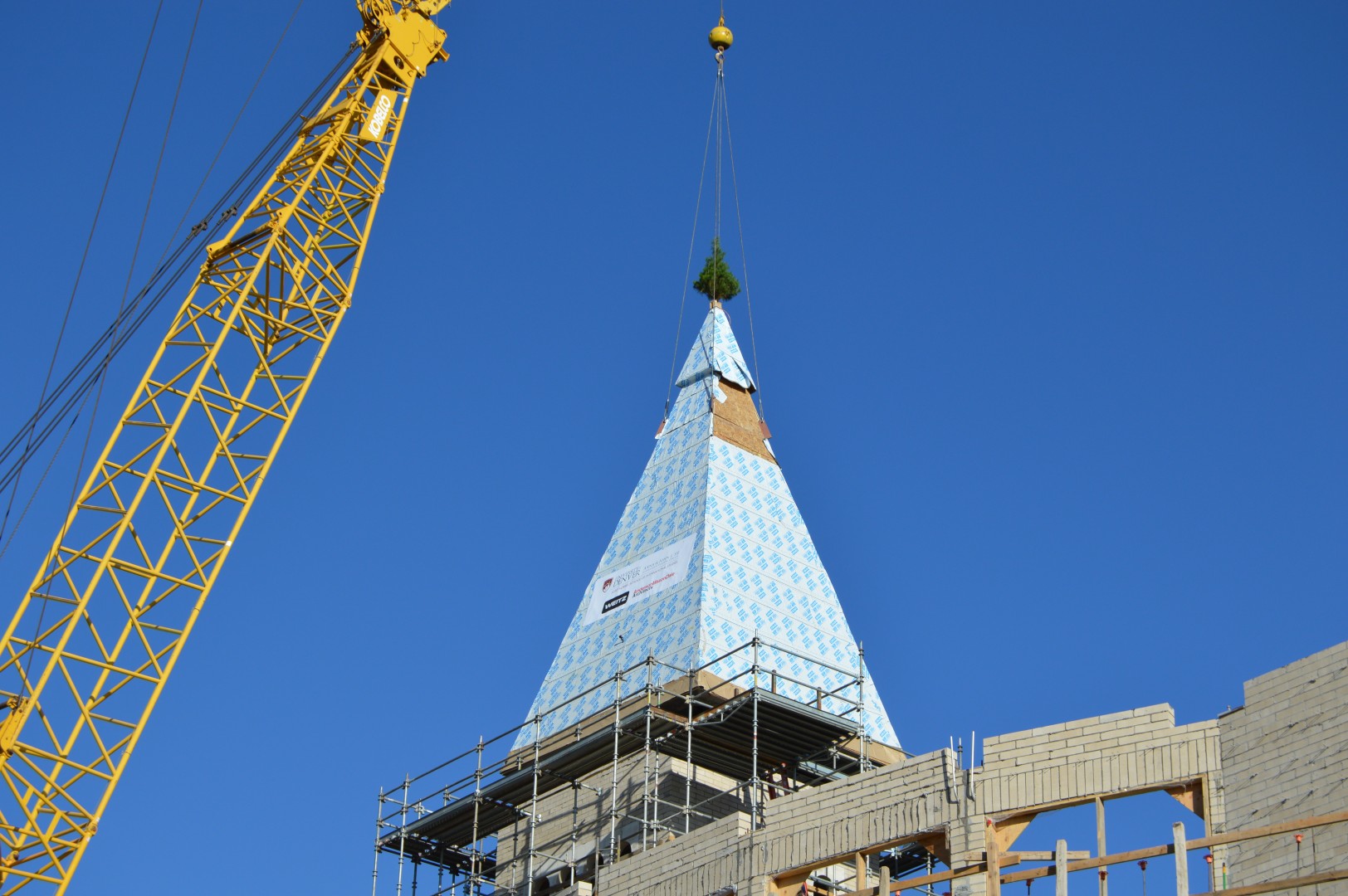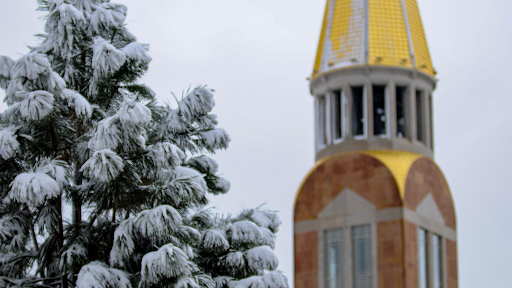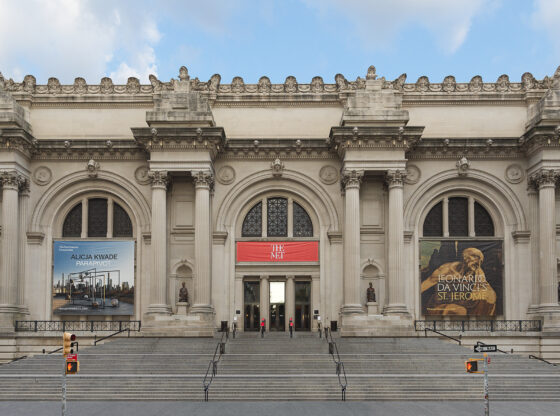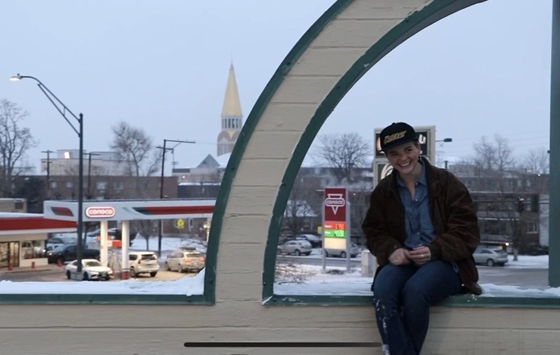On Sept. 24, the DU campus changed. Classes went on as scheduled, students participated in clubs and sports, but everything was done under the looming new presence of a tree.
“It’s just absurd,” said freshman environmental science major Arie Feltman-Frank (Lincolnshire, Illinois).
Of course, a new tree on campus shouldn’t come as any surprise—DU is home to over 2,200 of them—but what prompted hysteria was not the tree itself, but the location. A small evergreen now sits atop a prominent tower on the new Anna & John J. Sie International Relations Complex.
It became known as “Sky Tree.” When students learned of its presence, they did what anyone would do when a large, confounding object appears in their vicinity; they deified it.
“I’ve heard all sorts of crazy stuff about how Sky Tree will save us all,” said Jonathan Udlock, a second-year mechanical engineering student (Littleton, Colorado), “It gives us something to look up to—a savior in the sky.”
Yik Yak, a social media app that allows anonymous posting, naturally became the place of worship. “Sky Tree, please give me the serenity to be calm during this Chem exam,” read one Yak. “Sky tree now has 24/7 bodyguard protection. All Hail,” read another.
In fact, placing a tree or leafy branch at the highest point of a structure is a historied and long-standing construction tradition. Known as “topping out,” the ceremony has different significance in different cultures, but it has origins in Scandinavia.
According to university architect and neo-prophet Mark Rodgers, the purpose of the ceremony is two-fold. First, the tree simply signals to the community that construction is on schedule. Second, the belief went that deities “might take issue with man building higher than nature.” The tree was a way of acknowledging that what man can build is not necessarily superior.
Today, the tradition is often used as a public relations and media opportunity.
“Over the past 10 years I have been with DU, this has happened often,” said Rodgers. “Like most of the projects as far as I can recall, regardless of whether it’s a tower, dome or steel ridge beam like on Daniels.”

On the morning of Oct. 5, The Clarion confirmed a report that Sky Tree was removed from the tower, leaving many students without guidance.
“Everyone was in an uproar,” said Udlock, who expressed disheartenment of the tree’s departure. “I still relish the legend it became as part of DU’s community. Also, I haven’t quite given up hope that it won’t magically reappear in three days. It is our savior in the skies, after all.”
Rodgers said the tower is to be distinguished within DU’s “family of towers” and will have blue glazed tile to match the tile on the Sié Chéou-Kang Center’s roof.
The International Relations Complex will be open to students starting in spring quarter 2016.











